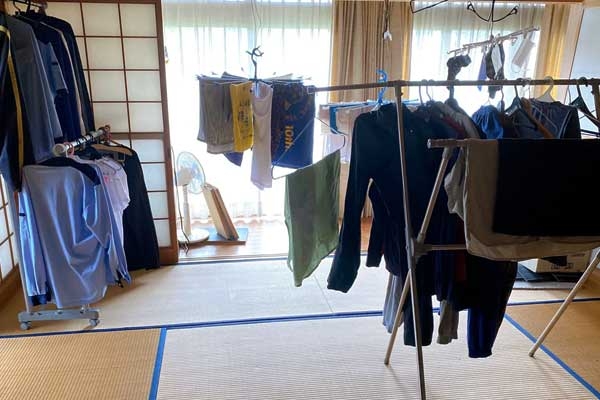Drying clothes indoors could lead to Mould and Respiratory issues
February 12, 2025 13:37
(Image source from: Canva.com)
When outdoor conditions are too chilly or wet for drying laundry, many individuals turn to drying their clothes inside. Although this might appear to be a simple solution, it can lead to unforeseen problems for your living space. Content creator Jake discussed this issue in one of his videos, stating, “Never air dry your clothes indoors. This is the primary reason for mould growth, particularly in homes with basements or laundry rooms.” But how serious is this risk, and are there measures to address it while still drying clothes inside? Allowing wet garments to dry indoors can substantially increase a home's humidity, which fosters environments conducive to mould development. As clothes lose moisture, that water vapor disperses into the air, raising humidity levels.
Mechanism:
Heightened Humidity: A single load of laundry can release as much as 2 liters of water vapor into the atmosphere during the drying process. This increased moisture creates an ideal situation for mould spores, which flourish in humid and damp environments.
Condensation: In areas with inadequate ventilation, this evaporated moisture gathers on cooler surfaces such as walls, ceilings, or windows, producing damp spots that promote mould growth.
Ongoing Exposure: Consistently drying laundry indoors exacerbates the problem, resulting in persistently elevated humidity and a higher chance of mould spreading.
Research featured in Building and Environment indicates that homes exceeding 60% humidity are at greater risk for mould proliferation, and indoor drying can elevate humidity well beyond that level.
Health Risks: Exposure to mould may lead to various health complications, especially for those with existing respiratory issues, allergies, or weakened immune systems. Dr. Hiremath outlines several risks:
Respiratory Issues: Breathing in mould spores can irritate the respiratory system, causing symptoms such as coughing, wheezing, and difficulty breathing. Extended exposure can raise the chances of developing chronic respiratory conditions like asthma.
Allergic Responses: Mould spores may trigger allergic reactions, manifesting as sneezing, a runny nose, itchy eyes, and skin irritations. Individuals with allergies to mould might experience increased sensitivity with continued exposure.
Toxicity: Certain mould varieties, such as Stachybotrys chartarum (commonly known as black mould), generate mycotoxins that can lead to severe symptoms, including chronic fatigue, headaches, and a weakened immune response.
Vulnerable Populations: Infants, the elderly, and those with compromised immune systems are particularly susceptible to infections or deteriorating health due to mould exposure. The World Health Organization (WHO) has directly linked indoor dampness and mould to increased occurrences of respiratory illnesses and asthma.
To safely dry clothes indoors, effective strategies must be implemented to minimize moisture accumulation and enhance ventilation. Use a dehumidifier to keep moisture levels below 60%, increase airflow by opening windows, utilizing exhaust fans, or selecting well-ventilated areas like bathrooms and laundry rooms. Employ heated drying racks, vented dryers, and smaller loads of laundry to expedite drying while lowering humidity levels. Incorporating absorbent substances such as silica gel or charcoal dehumidifiers can also assist. It’s essential to regularly check for mould, clean areas prone to dampness, and maintain indoor temperatures between 18 and 22 degrees Celsius to avoid moisture-related issues.







